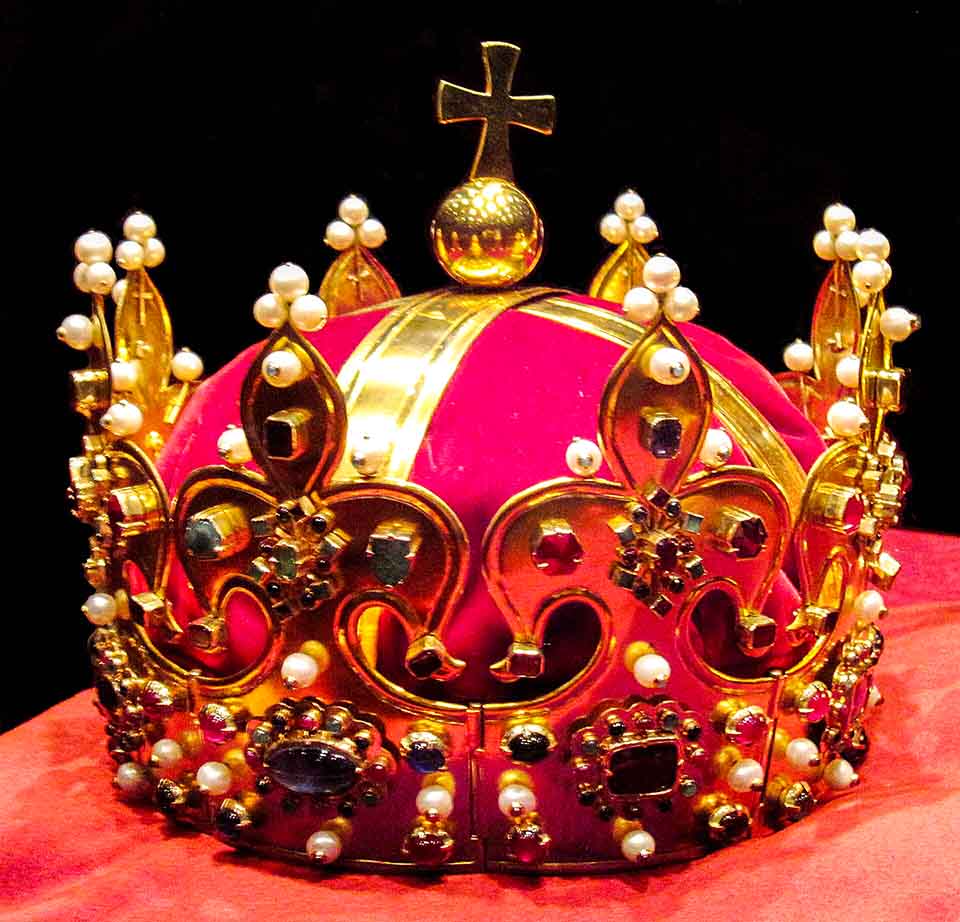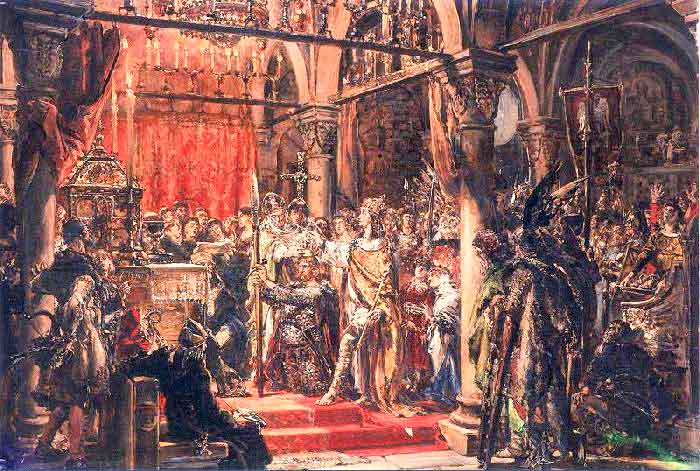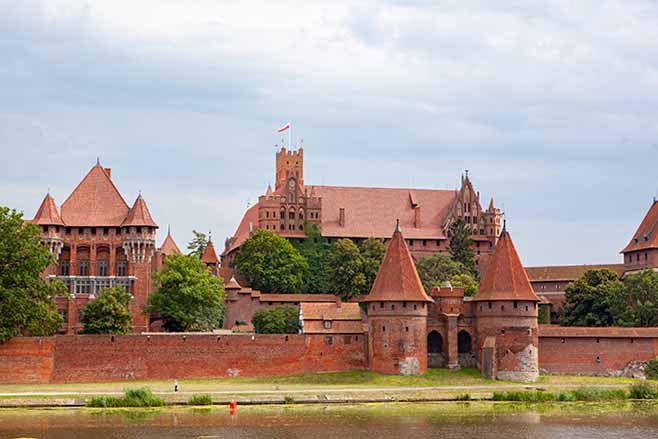In the basement of the Vilnius Cathedral, a secret hiding place was discovered with the burial insignia of the rulers of Lithuania and Poland: the King of Poland and Grand Duke of Lithuania Alexander Jagiellon, the first wife of Sigismund Augustus Elizabeth of Habsburg, and his second wife Barbara Radziwiłł. The treasures were wrapped in pre-war Polish newspapers.
The discovered grave insignia of Lithuanian and Polish rulers are priceless historical treasures, symbols of the long tradition of Lithuanian statehood, signs of Vilnius as the capital and magnificent works of goldsmithing and jewelry, said Vilnius Metropolitan Archbishop Gintaras Gruszas at a press conference on Monday.

Newly discovered crown insignia. (Source: GlosZnadNiemna.pl)
The following items were found: the funerary crown of Alexander Jagiellon and the funerary crown, chain, medallion, ring and coffin plaque of Elizabeth of Habsburg, as well as the funerary crown, sceptre, royal orb, three rings, chain and two coffin plaques of Barbara Radziwiłłówna.
These crowns were not worn during the rulers' lifetime. They were made after their death and were part of the grave insignia, Archbishop Gruszas said. He added that they will now be restored and exhibited in the future.
In addition to the royal insignia, six silver plaques that originally decorated the Chapel of St. Casimir were found, as well as numerous votive gifts, such as rings, earrings, crosses and episcopal objects. Among them is a plaque from the coffin of the Bishop of Vilnius, Benediktas Vaina.
In September 1931, the remains of King Alexander Jagiellon and two wives of Sigismund Augustus were discovered in the Vilnius Cathedral. The discovery was caused by a flood that had unexpectedly flooded Vilnius earlier. In 1939, the treasure was hidden from the Germans and Russians. After Lithuania regained independence, several attempts were made to search for it. The cache was found and opened on December 16 of last year.

Newly discovered crown insignia. (Source: GlosZnadNiemna.pl)
King Alexander Jagiellon (1461-1506) belonged to the Jagiellonian dynasty, from 1492 the Grand Duke of Lithuania, from 1501 the King of Poland. He was buried in the Vilnius Cathedral, which emphasized his strong ties with Lithuania. Alexander died on August 19, 1506 in Vilnius at the age of 45, leaving no offspring. His remains, against the will of the monarch, were buried in the Vilnius Cathedral. He is the only king of Poland who is buried in Lithuania.
All discovered artifacts will undergo detailed research and conservation, so that they can be presented to visitors in the future. The atmosphere surrounding the discovery suggests that it may be one of the most important archaeological events in recent years.











